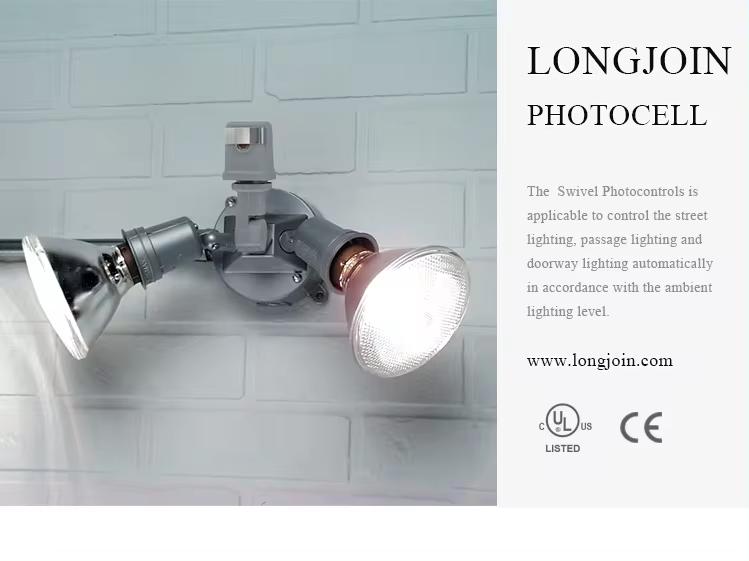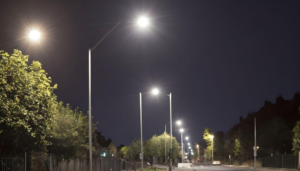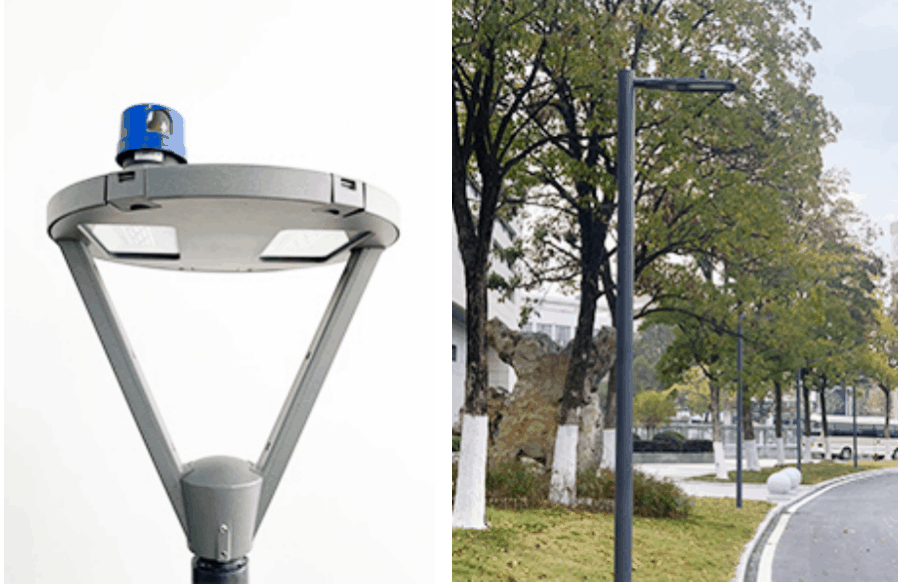Outline
- Introduction
- Smart System Integration
- Energy Conservation and Environmental Protection
- Human-Centric Lighting Design
- Integrated Multifunctionality and Smart City Integration
- Control of Light Pollution
- Data-Driven Decision Making
- Emergency and Safety Optimization
- Personalized and Dynamic Lighting
- Solar and Renewable Energy Compatibility
- Automation of Maintenance and Management
- Final Words
A World Bank report predicts that by 2050, it’s estimated that around 70% of the global population will live in cities, up from about 55% in 2020. This sprawling urbanization has made the demand for smarter, more energy-efficient lighting systems critical.
Outdoor light sensor switches are an effective counter in this regard. They enable cities to optimize their energy consumption, reduce maintenance costs, and improve the overall quality of life. These advanced dynamic sensor switches are the key building blocks for the creation of on-demand lighting systems.
In this article, we will explore the outdoor light sensors and their potential to influence the industry of exterior lighting, energy efficiency, and the vision of smart cities.

Smart System Integration
Light sensor switches are revolutionizing outdoor lighting by seamlessly integrating with smart energy-efficient illumination. These controllers use IoT, Artificial Intelligence, and cloud based platforms in order to control and regulate the proper functioning of lights in real-time.
They involve the use of sensors and data and perform functions such as brightness adjustment, fault detection, and operational automation depending on external conditions i.e. daylight levels, weather changes and so on. The application of such technologies ensures the prudent expenditure of energy and reduces wastage.
Additionally, remote control features allow city managers to customize lighting schedules, further enhancing energy savings and contributing to the development of efficient smart city ecosystems.
Energy Conservation and Environmental Protection
Energy conservation and environmental protection in outdoor lighting are increasingly driven by advancements in LED technology and smart energy management systems. LED lights are known for their efficiency, consuming up to 70% less energy than traditional lighting methods, significantly cutting operational costs and reducing carbon footprints
A notable example is the Los Angeles smart LED lighting program. Ed Ebrahimian, Director of the Bureau of Street Lighting Los Angeles, says that the integration of light sensor switches led to a 63% reduction in energy consumption. This not only optimizes energy use but also prolongs the lifespan of the lighting systems, enhancing both economic and environmental sustainability.
Human-Centric Lighting Design
The primary purpose of human-centric lighting designs is to provide a comfortable and adaptable lighting environment through adjustable color temperature and brightness, intended to boost both productivity and well-being.
Such systems replicate natural daylight having cooler, more stimulating lighting in the morning and warmer, soothing lighting in the evening, aligning with human circadian rhythms.
Advanced smart lighting solutions integrate sensor switches and automation to seamlessly adjust light based on user activity and ambient conditions, ensuring optimal visual comfort throughout the day.
This technology is further more relevant in outdoor conditions since varying light levels can help make such environments more comfortable and safe.
Integrated Multifunctionality and Smart City Integration
Integrated multifunctionality in smart city lighting goes far beyond traditional illumination. With outdoor light sensor switches, cities can combine lighting control functions with other essential urban services, creating a cohesive IoT-driven infrastructure.
These systems can synchronize lighting with environmental sensors, traffic management, and security systems, enabling real-time data sharing for dynamic urban responses. For example, LoRaCELL technology integrates with smart lighting systems to monitor air quality, temperature, and humidity, contributing to urban sustainability and public health initiatives.
In addition, 5G networks paired with IoT devices enable smart lampposts to host telecommunications equipment, enhancing connectivity while optimizing energy usage. This integration ensures cities benefit from real-time monitoring, lower energy consumption, and enhanced citizen safety.
Control of Light Pollution
Curtailing light pollution is an essential part of sustainable urban planning, especially critical for smart cities. Outdoor lighting can contribute to environmental harm, such as disrupting ecosystems and blocking the natural night sky.
To address this, modern outdoor light sensor switches are designed to offer precise illumination control, reducing unnecessary brightness and light spillage. Shielded luminaires, for example, direct light downward to prevent skyglow and minimize disruption to wildlife, particularly nocturnal species sensitive to artificial light.
Furthermore, using warm-white LEDs instead of blue-rich lights helps lessen the ecological impact on both humans and animals. By integrating these advanced control systems, cities can manage illumination more efficiently, striking a balance between safety and ecological preservation.

Data-Driven Decision Making
Data-oriented control of outdoor lighting systems is transforming urban management. These systems rely on built-in sensor switches to collect real-time data, such as ambient light levels, traffic patterns, and pedestrian movement. This data is processed through IoT platforms, allowing city managers to adjust lighting conditions dynamically and improve resource allocation.
For example, smart streetlights can dim during low-traffic hours or brighten in emergencies, optimizing energy use and enhancing public safety. Cities like Barcelona and Amsterdam are leveraging this data to inform broader urban strategies, from traffic flow management to sustainability efforts.
Also, as the data is gathered and analyzed, it enables predictive maintenance, reducing outages and operational costs by detecting potential equipment failures before they occur. This integration of data and urban management helps cities to become more efficient and responsive.
Emergency and Safety Optimization
Smart outdoor light sensor switches enhance urban safety by responding to real-time sensor data, allowing streetlights to brighten during emergencies like accidents or natural disasters. This improved visibility aids first responders and the general public, ensuring safer environments when needed most.
For instance, in connected smart city frameworks, integrated streetlights use sensors to detect anomalies and adjust their illumination accordingly. By combining video surveillance and other IoT technologies, traffic flow can be optimized for emergency vehicles, significantly reducing response times.
Personalized and Dynamic Lighting
Lighting personalization allows users to tailor lighting environments for specific occasions and activities, creating unique atmospheres. These systems leverage smart technology to adjust color temperatures, brightness levels, and even timing, aligning lighting schemes with users’ needs.
For example, during events, urban lighting can enhance architectural features or direct attention to focal points, creating inviting environments and improving safety.
Additionally, systems like SenCity integrate user-oriented services, enabling individuals to customize their surroundings, from workspaces to social venues. This adaptability not only enhances user experience but also contributes to energy efficiency.
Solar and Renewable Energy Compatibility
Smart lighting systems, including light sensor switches, are increasingly designed to be compatible with renewable energy sources like solar power. This integration allows lighting systems to operate sustainably, tapping into clean energy resources while reducing grid dependence.
By pairing with solar panels and using built-in energy storage systems, these switches ensure uninterrupted functionality, even during grid outages.
Furthermore, smart inverters and power electronics help manage energy flows more efficiently, balancing variable solar generation with consistent lighting needs. This leads to an eco-friendly, resilient solution that supports cities in achieving their sustainability targets.

Automation of Maintenance and Management
Effective management of outdoor lighting systems can significantly reduce maintenance costs and enhance reliability. Predictive maintenance in this regard, powered by IoT-enabled sensors, allows for real-time condition monitoring of lighting fixtures. By analyzing performance data, operators can foresee potential failures and schedule maintenance before issues arise, thus minimizing unexpected downtimes.
Additionally, advanced analytics can optimize energy consumption and enhance asset management through smart algorithms that adjust lighting levels based on environmental conditions. This proactive approach not only lowers maintenance expenses but also extends the lifespan of lighting systems by ensuring components are serviced only when necessary, maximizing operational efficiency.
Final Words
The evolution of outdoor lighting through innovative technologies and smart systems plays a vital role in enhancing future smart cities, offering energy efficiency, improved safety, and sustainable practices. For reliable outdoor light sensor switches, Chi-Swear stands out as an exemplary supplier, providing high-quality products that align with modern smart city initiatives and environmental goals.
External Links
- https://www.worldbank.org/en/topic/urbandevelopment/overview
- https://www.energy.gov/eere/ssl/text-alternative-version-city-los-angeles-led-streetlight-program
- https://pubmed.ncbi.nlm.nih.gov/38257666
- https://ajuntament.barcelona.cat/ecologiaurbana/en/services/the-city-works/maintenance-of-public-areas/energy-management/street-lighting-management
- https://www.tomorrow.city/amsterdam-launches-a-modular-urban-lighting-system






